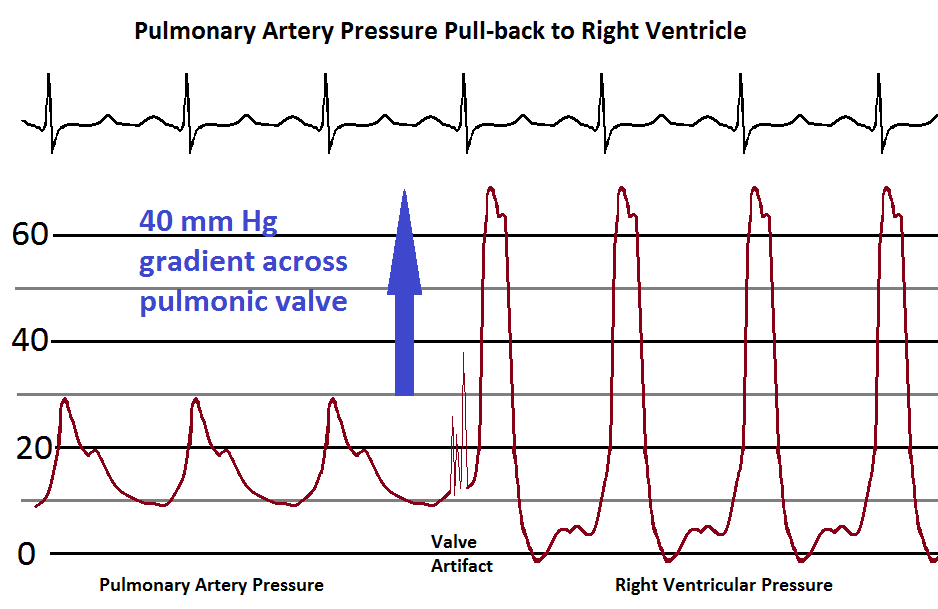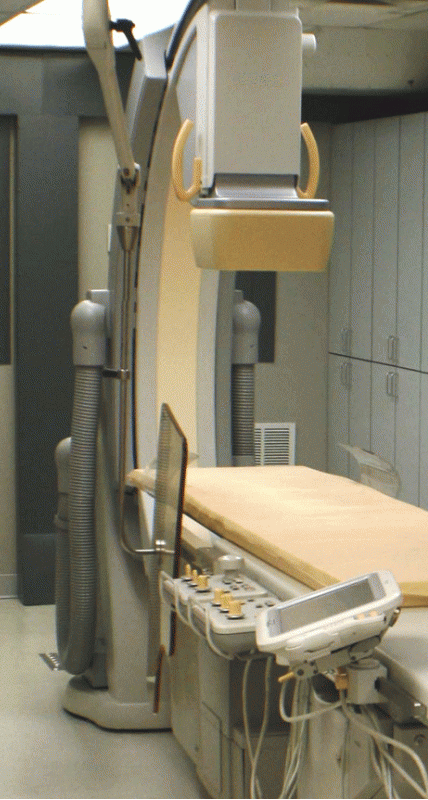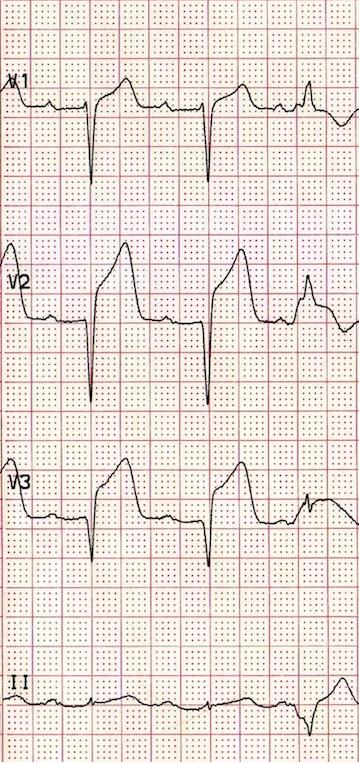Hemodynamics
Pulmonary Arterial Pullback
After Pulmonary Artery (PA) tracings are recorded, the catheter is pulled back across the pulmonic valve into the Right Ventricle (RV). This part of the Right Heart pullback is important in evaluating the pulmonic valve. It's very similar to the LV pullback into the Aorta to evaluate the Aortic Valve. Remember that when you want to assess a cardiac landmark, you must consider the chambers that precede and follow that landmark.
The primary evaluation of the PA pullback is the assessment of Pulmonic Valve Stenosis. A normal PA pullback will have no gradient between the peak systolic PA pressure and the peak systolic RV pressure. In the presence of Pulmonic Valve Stenosis, the peak RV systolic pressure will be significantly higher than the peak systolic PA pressure. This is because the RV must squeeze harder in order for blood to flow throught the stiff pulmonic valve into the pulmonary vasculature.
The PA pullback is best viewed at a 40 or 50 mm Hg scale (dependent on what you monitor allows) at a speed of 25 m/sec.
The normal PA pullback waveform

Pulmonary Stenosis
Pulmonary Stenosis (PS) is usually associated with a congenital cardiac abnormality from birth. The majority of cases involve the pulmonic valve, but may also be related to other obstructive abnormalities of the right ventricle or pulmonary artery. When the pulmonic valve becomes stenotic, the right ventricle must squeeze harder to eject blood into the pulmonary vasculature. The presence of mild pulmonary stenosis is usualy absent of sypmotoms. Moderate pulmonary valve stenosis can lead to symptoms of right heart failure. When the pulmonary valve gradient is noted to be > 50 mm Hg, treatment can be performed using balloon valvuloplasty to loosen the stiff pulmonary valve and decrease the valvular gradient.
Symptoms of Moderate Pulmonary Valve Stenosis
- shortness of breath
- dyspnea with exertion
- fatigue
- chest pain
- fainting
The PA pullback with Pulmonic Valve Stenosis

References
- Baim, D.S. (2005) Grossman's Cardiac Catheterization, Angiography, and Intervention. (7th ed.). Philadelphia,Pa: Lippincott, Williams & Wilkins.
- Kern, M. et al (2003) The Cardiac Catheterization Handbook (4th ed.). Philadelphia, Pa: Mosby.

